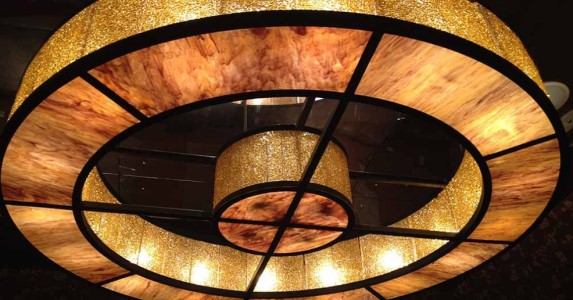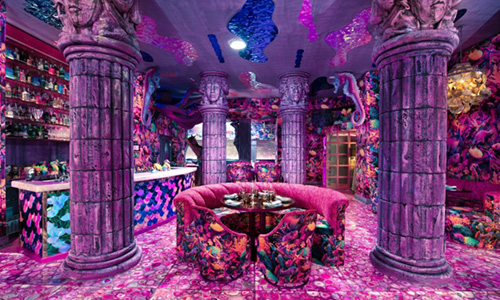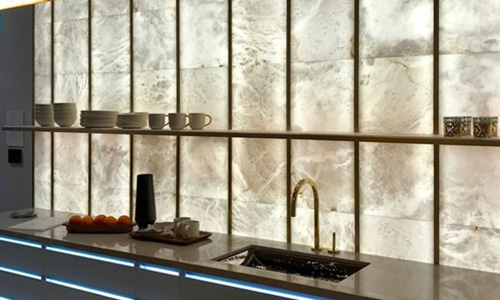Moulded faux onyx has several advantages over ‘real’, natural stone. Here are some of these advantages.
Natural Onyx
Natural onyx is, like any other natural stone, quite heavy, which often limits its use due to buildings’ load restrictions. Colours and patterns are often somewhat unpredictable and it is also comparatively difficult to shape natural stone to meet design requirements without the risk of chipping or breaking panels. Natural stone is also at risk of accidental damage (chipping, breaking, scratching) once in position and porosity may mean panels are unsuitable for food use. What’s more, as natural resources are rapidly being depleted, prices for natural onyx are also continually rising.
Moulded Faux Onyx
Created using state-of-the-art technology and hard UV applied modified resins (high performance), moulded faux onyx, on the other hand, is:
- Lightweight and subsequently suitable for use anywhere without worrying about weight restrictions.
- Extremely flexible. Faux onyx can be moulded, curved, drilled and cut into any desired shape/size without risk of damage and can be used in a variety of applications, from columns, furniture and counter/bar fittings (tops & fronts) to POS displays, light fittings or walls and ceilings.
- Hardwearing, durable and versatile. Scratch-resistant, non-porous and food safe (download data sheet), faux onyx is available in a broad range of stunning patterns and colours, making it a highly versatile solution suitable for use within any commercial or residential environment (explore swatches).
- Environmentally friendly. Use of faux moulded onyx preserves natural resources.
Last, but by no means least, moulded composite onyx retails at far more affordable prices than natural stone.
Moulded Faux Onyx vs. Natural Onyx
In a nutshell, moulded onyx enables you to create magnificently beautiful interiors without the inherent weight, budget and design limitations of natural onyx.
Call our experts on 0203 292 0616 now to learn more and/or discuss your individual design requirements.





